Established in 2015 by Parks Canada Agency (PCA), the Rouge National Urban Park (RNUP) is an ecologically protected zone that encompasses much of the Rouge River and Little Rouge Creek valleys. At 7,910 hectares, RNUP is the largest urban park in North America and Canada’s first “National Urban Park”. Straddling parts of Toronto, Markham, Durham, and Uxbridge, the RNUP forms a green corridor of forests, farmland, wetlands, ravines, and meadows that connect the Greenbelt to Lake Ontario.

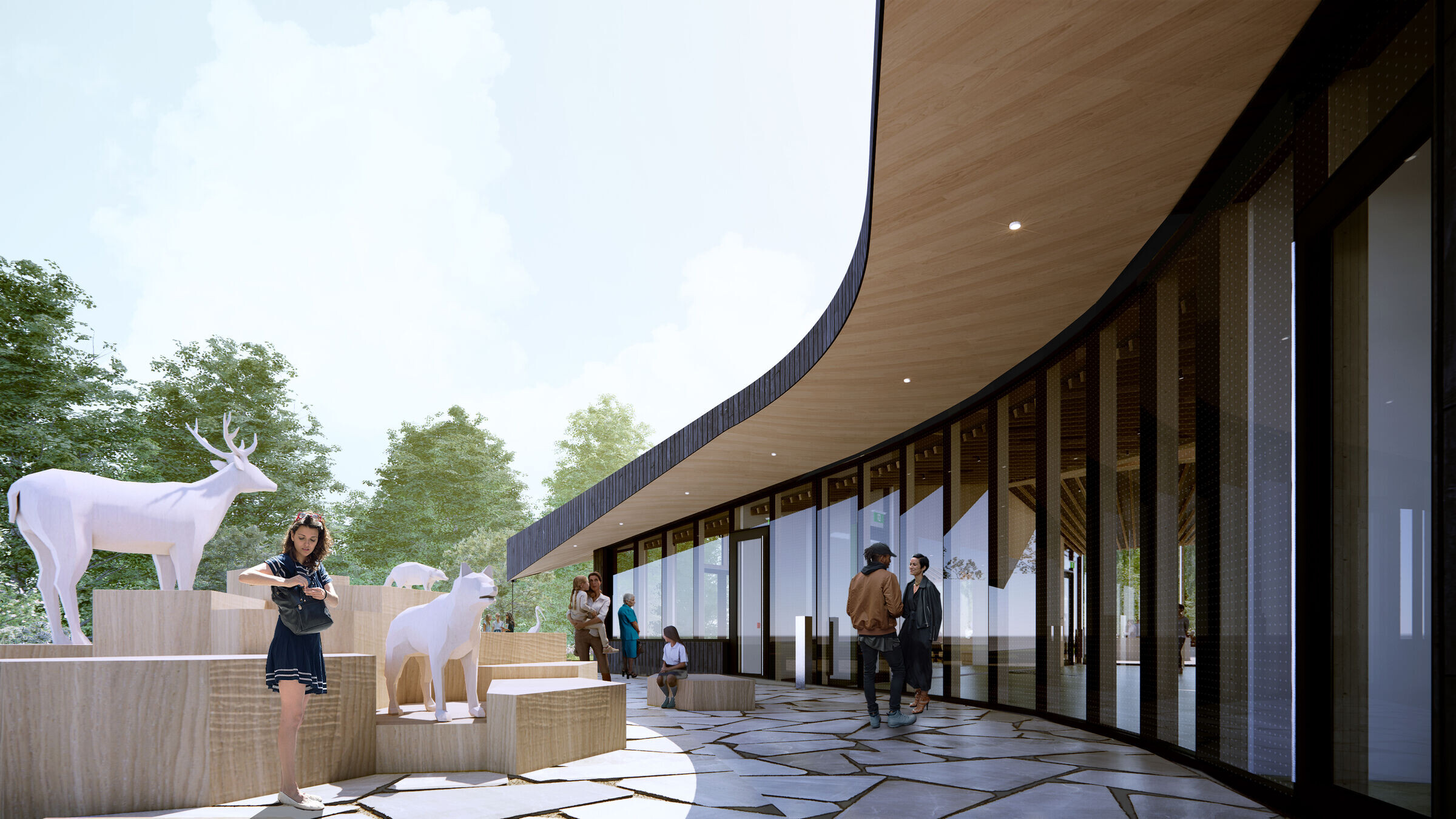
The RNUP Visitor, Learning, and Community Centre will serve as the park’s primary orientation, learning, and events facility where visitors can learn about Rouge’s Indigenous, natural, cultural, and agricultural heritage. As the first visitor centre for this park, PCA wanted to create a new architecture that spoke to the spirit and uniqueness of RNUP, providing a gateway for the 7 million Canadians living within an hour’s drive to the extensive network of national parks surrounding the Greater Toronto Area. This project integrates community-based elements with an innovative architectural scheme that synchronizes with nature.

The history of the Rouge has deep ties to Indigenous heritage and includes some of the oldest known Indigenous sites in Canada. The design process included extensive design consultations with the First Nations Advisory Circle (FNAC), comprised of ten Indigenous communities who were historically and/or are currently living in proximity to the RNUP. FNAC expressed a desire for a seamless transition between building and natural elements; “a need to feel feet on the ground and head in the sky”, having the building integrated with the surrounding landscape.
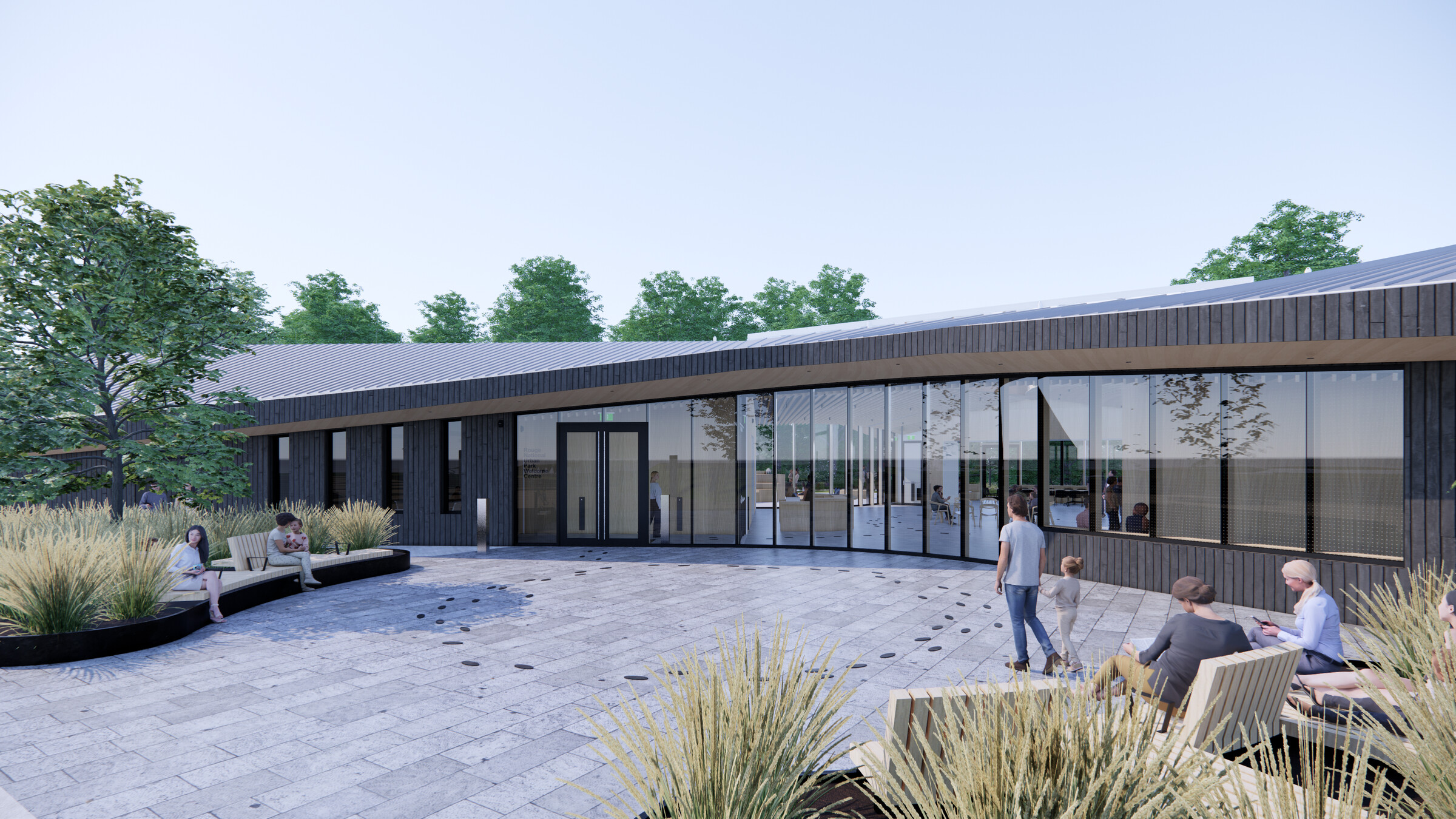
A central theme of restoration was collectively established with PCA to help guide a unified design narrative between building, landscape, and visitor experience. The implementation of this theme is multifaceted; visitors restore and learn of the natural environment, restore and celebrate the many stories of the land, restore and strengthen a sense of community, and ultimately, restore mind, body, and spirit through reflection, movement, and nourishment. Restoration is not focused only on what was, but what will draw inspiration from the past to ignite the future.
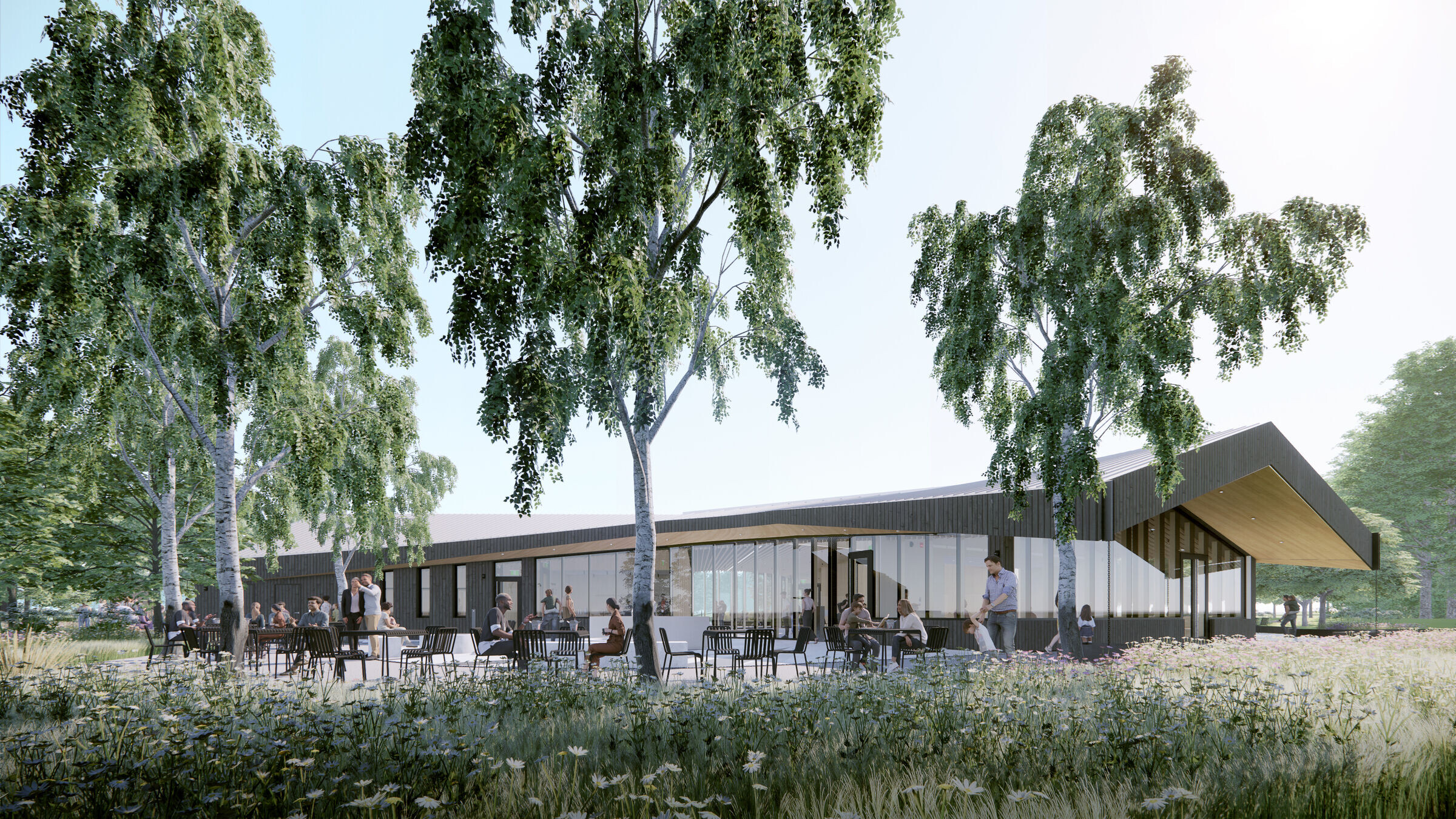
Another guiding theme was the solstice, which holds deep cultural and spiritual significance for all cultures, universally. Summer solstice symbolizes a new season of life; a chance to start fresh and leave past burdens behind. Winter solstice is a
time to reflect on the past year; a period to listen to the Elders, share stories, rest, and reconnect with loved ones. Additionally, the solstice bears significant ties to the practice of cultivation at RNUP, guiding agricultural cycles of tilling, sewing, and harvest. Both Indigenous peoples and earlier settlers farmed the land for thousands of years. Today, two thirds of RNUP consists of agricultural land, with a strong community of working farms that practice sustainable food production throughout the year.

The building is oriented to true north; a simple and geometric form of three “spokes” intersect at a skylight opening, connecting visitors to the sky. With feet planted on the ground, the movement of the sun carves traces on the floor, marking the passage of time and its pendulum-like swing between summer and winter solstice. The new building will act as a welcoming gateway, and a threshold between the urban and natural environment.

WELCOME WING AND RESTORATION PLAZA
Upon arrival, visitors are greeted by the land acknowledgment panel, which aligns with the central axis to the building. Moving into the main entry and shielded by regenerative and low maintenance plantings, a circular formation of moccasins is imprinted into the plaza paving, inviting a playful use of the space while evoking an Indigenous presence . The moccasin imprints extend into the building, carrying visitors into the central lobby. A total of 133 moccasins will be imprinted, both indoors and outdoors to represent the 133 First Nations of Ontario.
Sweeping benches are set within the planters, creating platforms for visitors to lounge and lie among the plantings while under the shade of the sugar maples.

LEARNING ROOM AND PARTICIPATION GARDEN
The Learning Room is an extension of the lobby to accommodate large visitor groups and active daily functions at the centre. Its interiors are lined with built-in seating and storage with glazing above for expansive views of existing and curated landscapes. When required, this flexible space can be closed off through moveable partitions and privacy blinds and reconfigured to support intimate or private functions.
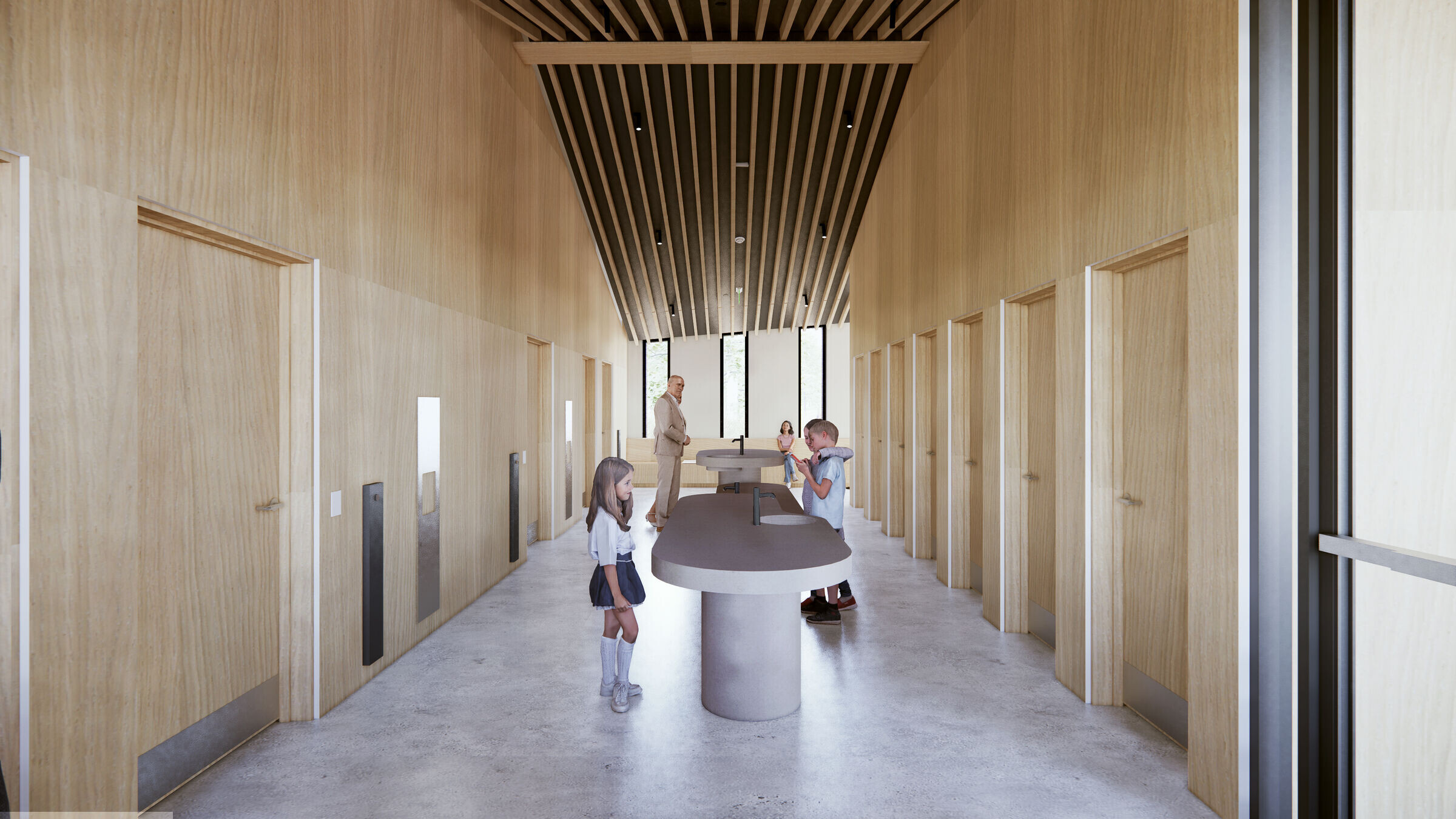
The Learning Room defines an intimate outdoor space to the north of the building. The Participation Garden, enclosed by the existing forest edge. Plantings are a purposeful mix of food and medicinal plants that offer land-based learning and help define smaller grassy nooks to encourage contemplation.
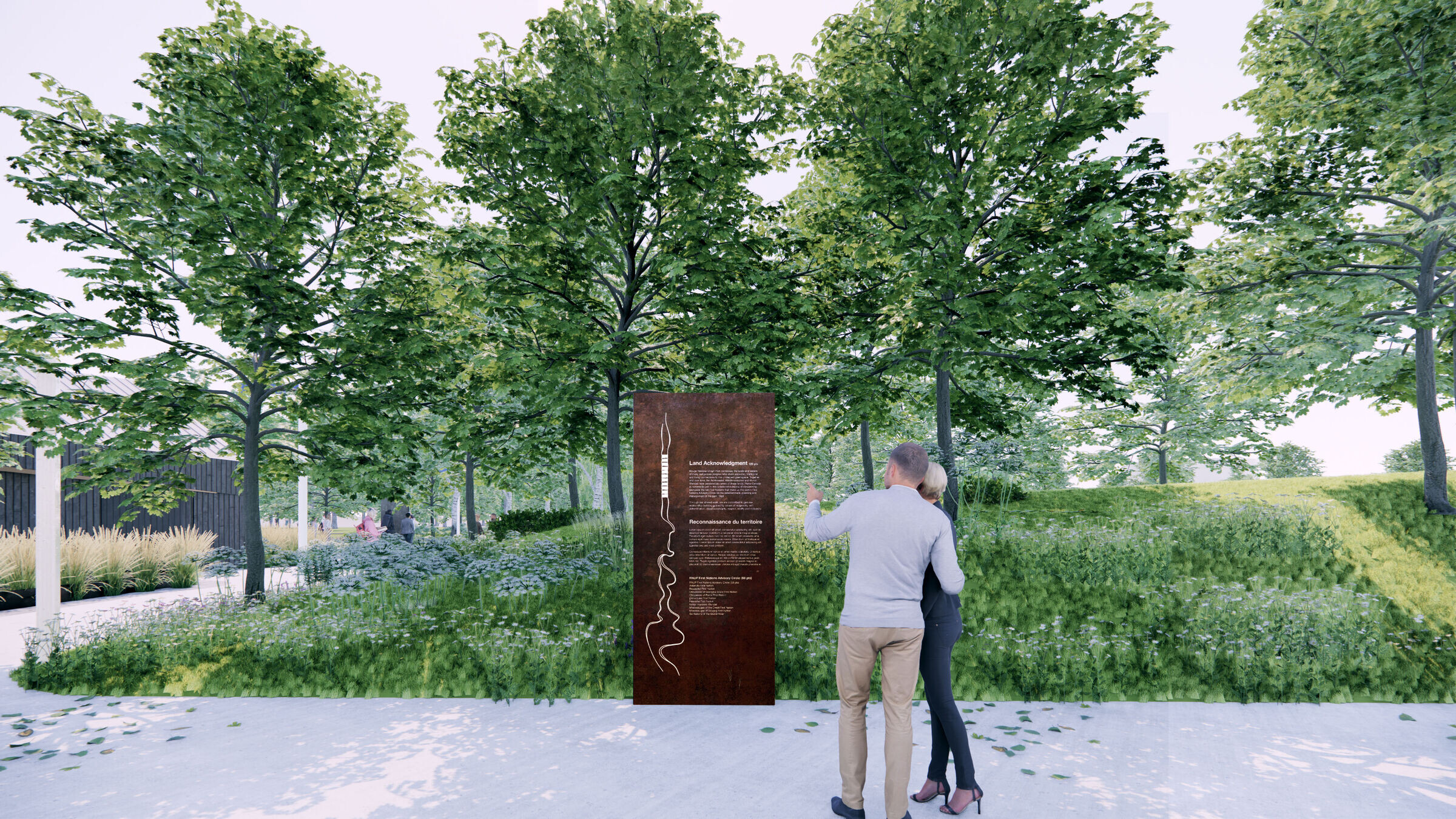
FOOD WING AND FOOD TERRACE
Acknowledging the significance of solar orientation, the Food Wing is aligned true north. The café will offer locally grown food and culinary traditions specific to the park. The Food Terrace provides complementary outdoor seating shaded by basswood and nestled in a mix of shrubs. To help foster a sense of community and to promote cultural exchange, a circular outdoor kitchen is focal to the terrace, encouraging visitors to participate in shared food preparation and dining.

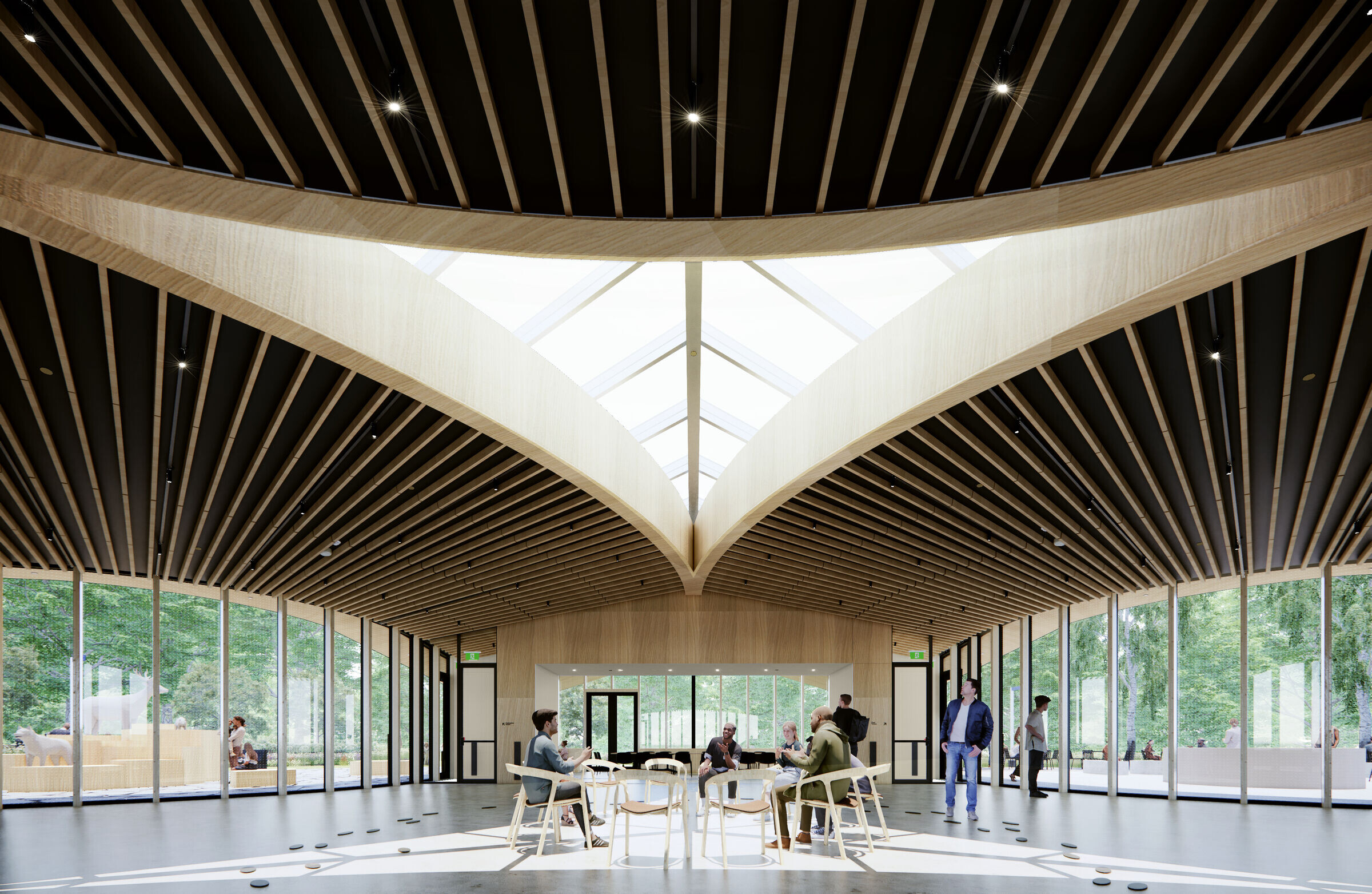
To recognize PCA’s commitment to safety, accessibility, and gender inclusivity, public washrooms consist of fully enclosed stalls and communal washbasins. A wellness room is also provided for visitors to decompress and nurse in private. Glazing and ceiling height gradually reduce to suggest intimacy, while interior walls and millwork, as in all public spaces, are clad with wood to encourage biophilic responses.
































